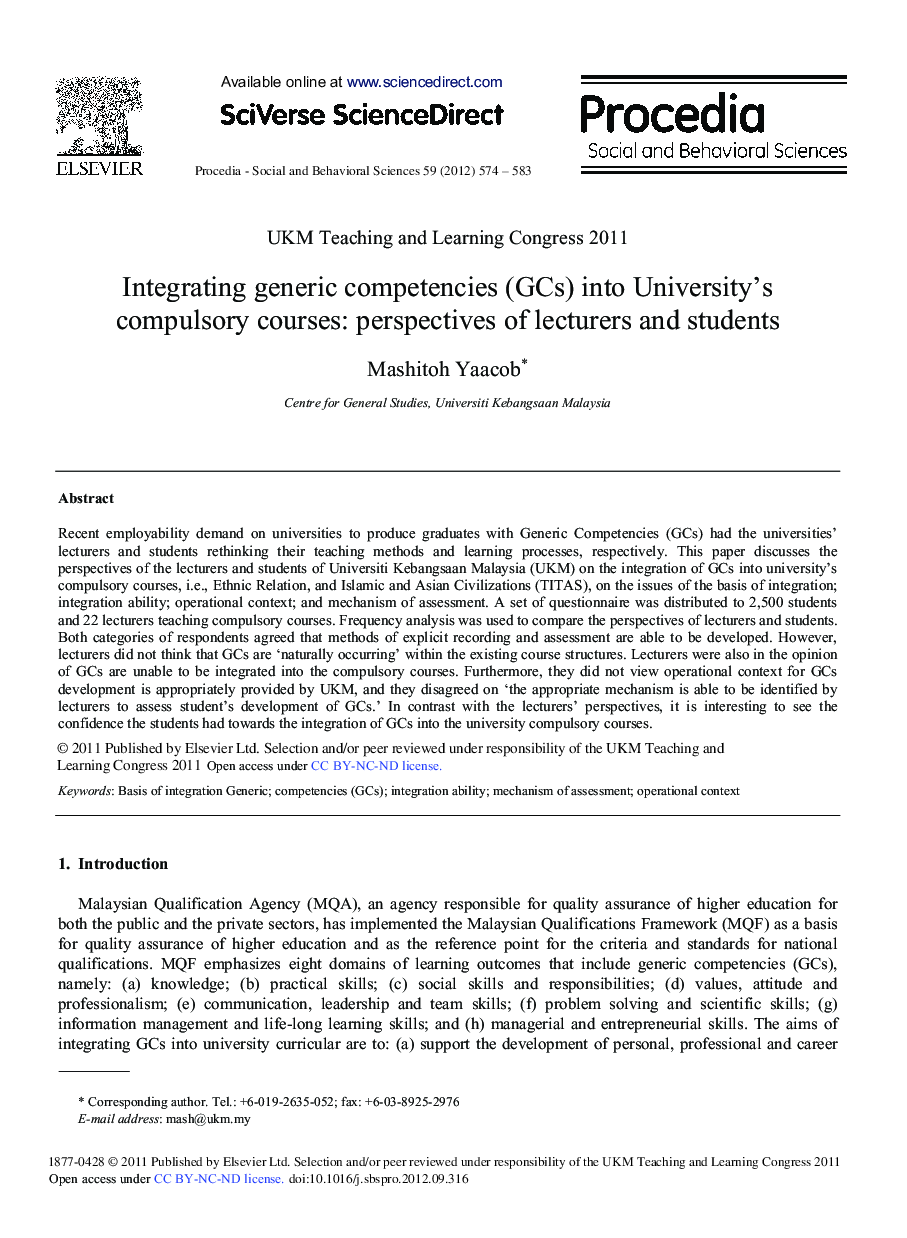| کد مقاله | کد نشریه | سال انتشار | مقاله انگلیسی | نسخه تمام متن |
|---|---|---|---|---|
| 1120590 | 1488500 | 2012 | 10 صفحه PDF | دانلود رایگان |

Recent employability demand on universities to produce graduates with Generic Competencies (GCs) had the universities’ lecturers and students rethinking their teaching methods and learning processes, respectively. This paper discusses the perspectives of the lecturers and students of Universiti Kebangsaan Malaysia (UKM) on the integration of GCs into university's compulsory courses, i.e., Ethnic Relation, and Islamic and Asian Civilizations (TITAS), on the issues of the basis of integration; integration ability; operational context; and mechanism of assessment. A set of questionnaire was distributed to 2,500 students and 22 lecturers teaching compulsory courses. Frequency analysis was used to compare the perspectives of lecturers and students. Both categories of respondents agreed that methods of explicit recording and assessment are able to be developed. However, lecturers did not think that GCs are ‘naturally occurring’ within the existing course structures. Lecturers were also in the opinion of GCs are unable to be integrated into the compulsory courses. Furthermore, they did not view operational context for GCs development is appropriately provided by UKM, and they disagreed on ‘the appropriate mechanism is able to be identified by lecturers to assess student's development of GCs.’ In contrast with the lecturers’ perspectives, it is interesting to see the confidence the students had towards the integration of GCs into the university compulsory courses.
Journal: Procedia - Social and Behavioral Sciences - Volume 59, 17 October 2012, Pages 574-583